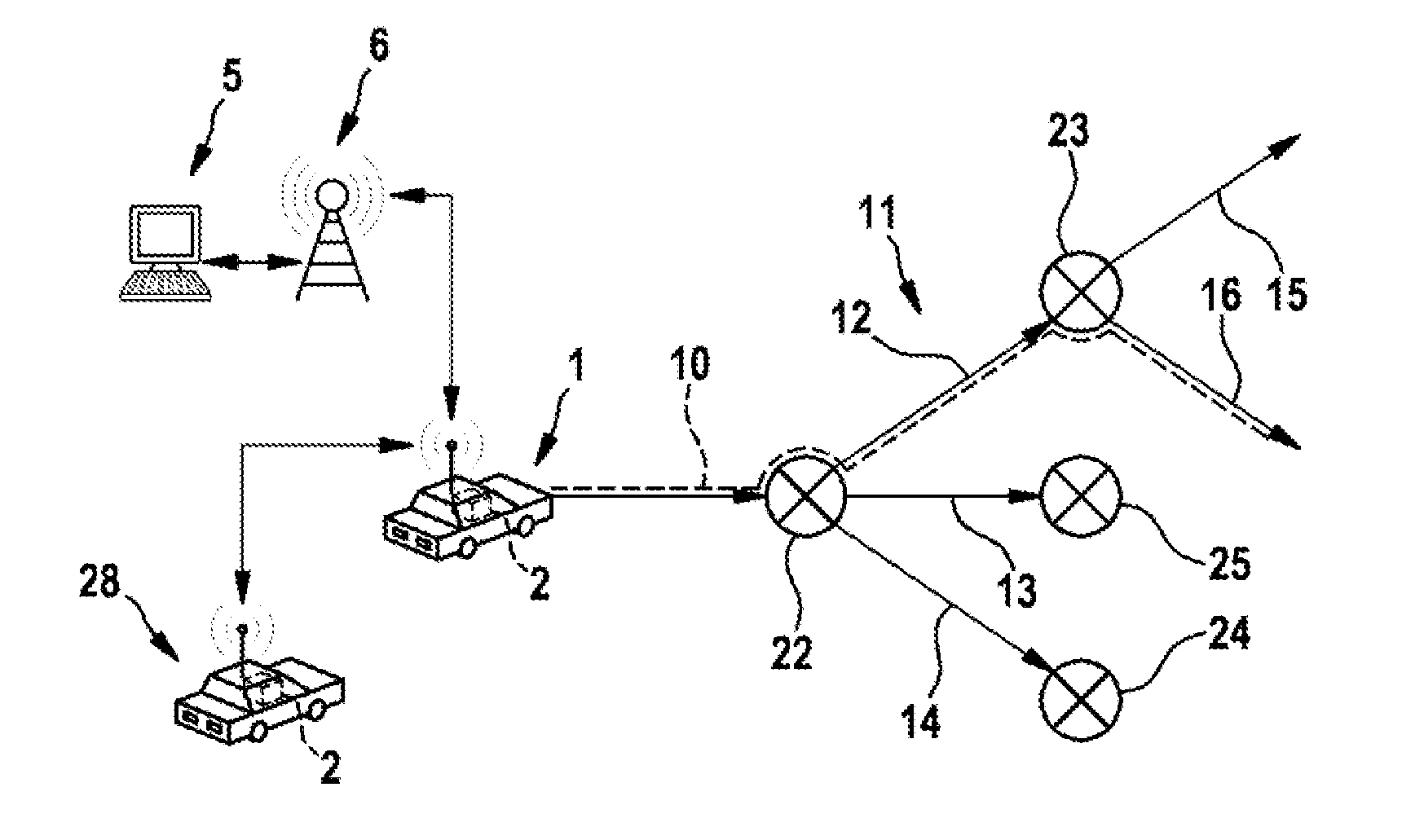Method for transmitting route data for traffic telematics
a technology of route data and traffic telematics, applied in the field of transmitting route data for traffic telematics, can solve the problems of erroneous map matching, inability to ensure map matching to the exact street, and inability to accurately match the exact street, etc., and achieve the effect of high accuracy valu
- Summary
- Abstract
- Description
- Claims
- Application Information
AI Technical Summary
Benefits of technology
Problems solved by technology
Method used
Image
Examples
Embodiment Construction
[0023]FIG. 1 shows, in a schematic manner, the view of a road system 11, which may be traveled on by a vehicle 1. Vehicle 1 drives towards a road junction 22, and road junction 22 allows it to continue into roads 12, 13 and 14. Road 12 leads up to road junction 23 and allows continued travel onto roads 15 and 16. Road 13 leads up to road junction 25, and road 14 leads up to road junction 24. For example, a travel route 10 is specified to have a high probability of being traveled on; therefore, the likelihood that vehicle 1 travels on road 12 after road junction 22 is greater than traveling on roads 13 or 14.
[0024]In order to provide traffic telematics information, vehicle 1 has a traffic telematics unit 2, by which vehicle 1 may communicate with a traffic telematics unit 2 of a further road user 28 or with a central processing unit 5 via a transmitting unit 6. In this context, the present invention pursues the object of keeping the necessary data volume for communication as low as p...
PUM
 Login to View More
Login to View More Abstract
Description
Claims
Application Information
 Login to View More
Login to View More - R&D
- Intellectual Property
- Life Sciences
- Materials
- Tech Scout
- Unparalleled Data Quality
- Higher Quality Content
- 60% Fewer Hallucinations
Browse by: Latest US Patents, China's latest patents, Technical Efficacy Thesaurus, Application Domain, Technology Topic, Popular Technical Reports.
© 2025 PatSnap. All rights reserved.Legal|Privacy policy|Modern Slavery Act Transparency Statement|Sitemap|About US| Contact US: help@patsnap.com


